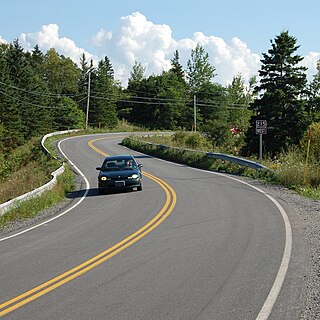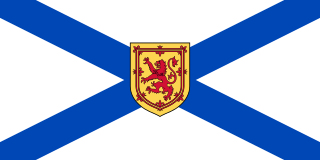
Bass River is an unincorporated rural community in western Colchester County, north-central Nova Scotia, in the Maritimes of Canada. It is shares the name of the river located there, that flows into Cobequid Bay.

East Hants, officially named the Municipality of the District of East Hants, is a district municipality in Hants County, Nova Scotia, Canada. Statistics Canada classifies the district municipality as a municipal district.

Hantsport is a Canadian community located in Hants County, Nova Scotia. It is administratively part of the Municipality of the District of West Hants.

Milford Station is a Canadian village in Nova Scotia's East Hants municipal district in the Shubenacadie Valley.

The Aspotogan Peninsula is a peninsula in the eastern part of Lunenburg County, Nova Scotia, separating St. Margarets Bay in the east from Mahone Bay in the west. The peninsula was originally settled by second generation French immigrants on the east side and by second generation German immigrants on the west side. Traditionally fishing was a major industry for communities throughout the peninsula, however other primary industries such as farming and forestry were historically important as well. Shipping and shipbuilding were secondary and tertiary industries that also came into prominence during the 19th and early 20th centuries.

Route 215 is collector road in the Canadian province of Nova Scotia.

Gore is a rural Canadian community in central Hants County, Nova Scotia. It is located just 25 minutes from Elmsdale; 30 minutes from Halifax Stanfield International Airport; and 45 minutes from Truro. It was named after Sir Charles Stephen Gore. The community was settled primarily by the 84th Regiment of Foot.

Burntcoat Head is an unincorporated rural Canadian community in Hants County, Nova Scotia and is known internationally as the site where it was officially recorded that the Bay of Fundy, and specifically Burntcoat, has the highest tides in the world.

Maitland, East Hants, Nova Scotia is a village in the East Hants, Nova Scotia municipal district, and home to the historic Lawrence House Museum, part of the Nova Scotia Museum. The community was part of the Douglas Township until it was named Maitland after Governor General of Nova Scotia Peregrine Maitland (1828–34), when building the Shubenacadie Canal was first attempted (1826–1831). The Canal was supposed to start at Maitland, Nova Scotia and run through the province to Maitland Street, Dartmouth, the canal being "bookended" by two "Maitland" landmarks.

Kennetcook is a community in the Canadian province of Nova Scotia, located in the Municipal District of East Hants. Also see adjacent community of Upper Kennetcook.

Gormanville is a community in the Canadian province of Nova Scotia, located in the Municipal District of East Hants in Hants County. The same families of Ulster Scots people, the Densmores and O'Briens, who had earlier settled Noel, Nova Scotia were the first to settle the area. The community was named much later after Matthew Gorman (1884). His two sons died young at age 22 and 27 and are buried in the Saint Francis Xavier Roman Catholic Cemetery, in Maitland, Hants County, Nova Scotia.

Noel Shore is a community in the Canadian province of Nova Scotia, located in the Municipal District of East Hants. The community is named after Noel Doiron and may have originally been named Vil Robere. Acadians left the area during the Acadian Exodus (1710). Birthplace of one of the famous "Miller Brothers", Harry Herbert Miller winner of the American Medal of Honor for actions during the Spanish–American War. His brother Willard Miller was born in the neighbouring community of Maitland, Nova Scotia.

Mount Denson is a small community in the Canadian province of Nova Scotia, located in The Municipality of the District of West Hants in Hants County. The community is named after Mount Denson; the mid-eighteenth-century estate of Henry Denny Denson.

North Noel Road is a small community in the Canadian province of Nova Scotia, located in The Municipality of the District of East Hants in Hants County. The community is named after Noel Doiron.

Noel Road is a small community in the Canadian province of Nova Scotia, located in The Municipality of the District of East Hants in Hants County. The community is named after Noel Doiron.
Douglas is a former township in the Canadian province of Nova Scotia. The township was the eventual destination of Loyalists fleeing the Siege of Ninety Six during the American Revolutionary War. In 1861, along with the township of Rawdon, Nova Scotia, the Douglas township became part of the newly formed Municipal District of East Hants, along with neighbouring townships.









